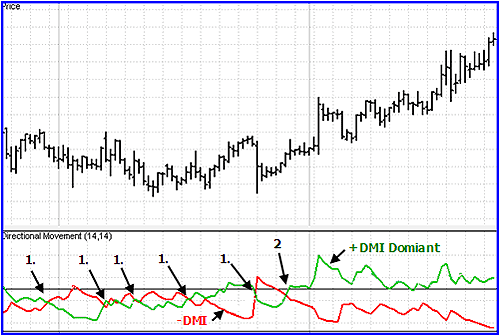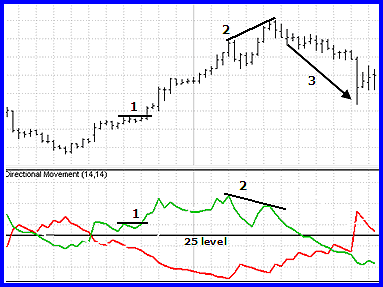The location of the two lines is important, as the higher line is considered by some traders to the the "dominant" line and is the line that correlates to price action, when the +DMI is on top then it is more likely to be moving upwards in price and when the -DMI is on top then it is more likely to be moving downwards. A potential trading signal occurs when a crossover of the lines happens, signalling a change in the trend. A crossover occurs when the lower line crosses above the higher line, indicating that a change in trend strength is occurring. These crosses are less than reliable: in times of low volatility there are commonly false signals and in high volatility the signals are usually very late.
Peaks are important to note when looking at this indicator, peaks in +DMI reflect the highs in a bullish rally while peaks in a -DMI represent the lows in a bearish rally. A series of +DMI peaks above the -DMI signal a strong uptrend, while a strong downtrend is characterized by the -DMI peaks above the +DMI. Pivots appear in the DMI when price action changes direction. A +DMI pivot high is caused by price making a pivot high, a -DMI pivot high is caused by price making a pivot low.


No comments:
Post a Comment